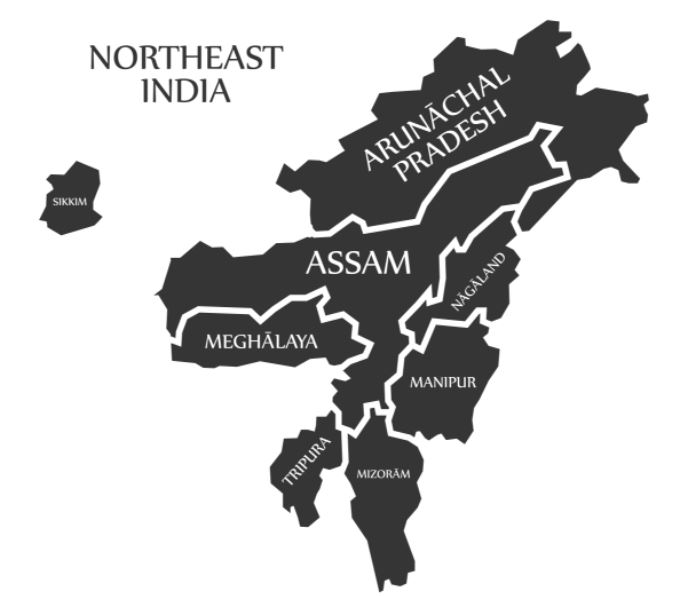Peace process in Northeast -Progress and the significance

Context: The Assam and Meghalaya chief ministers recently signed an agreement to resolve the five-decade-old border dispute. Also, the Union home ministry (MHA) recently decided to reduce the disturbed areas under the Armed Forces (Special Powers) Act (AFSPA) in Assam, Nagaland and Manipur after decades. Both these developments are significant for restoring normalcy and enabling perception changes in the northeastern region.

The recent efforts to address the issues of the Northeast
- On analyzing the recent efforts to address the issues of the Northeast one can see that it is moving in according to a strategic plan which is premised on three objectives.
- Ending all disputes
- Ushering in economic progress and taking the region’s contribution to GDP back to its pre-Independence levels.
- Making efforts to maintain and preserve the region’s languages, dialects, dance, music, food, and culture and make it attractive to the whole country.
On all these fronts there is progress and a difference from the past when assurances and agreements languished due to poor or almost no implementation.
Engagements to settle the interstate border disputes and insurgency
- As part of the aforementioned strategy, existing issues of both interstate border disputes and insurgency have been closely studied and negotiated and a few agreements have been signed.
How Assam could get into a proactive border dialogue?
- Assam, with the maximum border disputes in the region, got into a proactive border dialogue ever since the current chief minister took office almost a year ago.
- After the violent flare-ups witnessed last year at the Assam-Mizoram border, today there are regular engagements to maintain peace and work out a permanent solution.
- The dialogues on the state’s border disputes with Meghalaya, Arunachal Pradesh, Nagaland and Mizoram are continuing at a steady pace and while the recent agreement with Meghalaya has been signed, progress is being made in the other disputes as well.
- The model of Assam’s engagement with Meghalaya is a good one to emulate — the two chief ministers, after two rounds of talks in August last year, constituted three committees each under cabinet ministers in their states to go into the complex boundary issues.
- Based on the recommendations of the committees, the first phase has seen six points of dispute, with less critical differences, being settled.
- A phase-wise solution is also a good confidence-building measure, apart from the experience gained on the ground in implementing the agreement.
Why the recent notification of MHA on AFSPA really matters?
The disturbed areas notification (DAN):
- DAN has been in force in the whole of Assam since 1990, in all of Manipur (except the Imphal Municipality area) since 2004 and in the whole of Nagaland since 1995.
Why the removal of the disturbed areas notification (DAN) was much justified?
- Peace has been witnessed in most places across Assam, and even in Nagaland and Manipur talks with various groups for a permanent solution had resulted in a cessation of violence.
- The NLFT Tripura Agreement (August 2019), the Bru Agreement (January 2020), the Bodo Peace Accord (January 2020) and the Karbi Anglong Agreement (September 2021) have actually resulted in about 7,000 militants surrendering their arms.
- So, the demand for the removal of the disturbed areas notification (DAN) was very much justified.
The removal of the DAN tag and AFSPA
- With the removal of the DAN tag, AFSPA has been removed with effect from April 1st this year completely from 23 districts and partially from one district of Assam, from 15 police station areas of six districts of Manipur and from 15 police station areas in seven districts in Nagaland.
- DAN is currently applicable in only three districts and in two police station areas in one other district of Arunachal Pradesh.
- AFSPA was completely removed from Tripura in 2015 and Meghalaya in 2018, respectively.
Conclusion
- Progress in settling border disputes and the removal of AFSPA herald positive changes in the northeast region of India.
Practice Question for Mains
- The efforts by the Union government to make the northeastern region the main pillar of the Act East policy have been useful in bringing a sense of political stability that is very crucial for optimal economic development and capacity enhancement in the region. Discuss. (250 Words, 15 Marks)
If you like this post, please share your feedback in the comments section below so that we will upload more posts like this.

